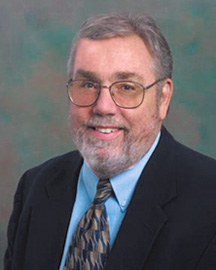 Since You Asked
Since You AskedQ&A
 Since You Asked
Since You AskedConfused about some aspect of trading? Professional trader Don Bright of Bright Trading (www.stocktrading.com), an equity trading corporation, answers a few of your questions. To submit a question, post it on the Stocks & Commodities website Message-Boards. Answers will be posted there, and selected questions will appear in future issues of S&C.
HIGH-FREQUENCY TRADES
Recently, the Stocks & Commodities “Opening Position” referred to the domination of the markets by high-frequency trades (HFTs) (S&C, July 2012). I have heard that many times and many places, but I have never heard any actual statistics on the subject. I realize it is in the HFTs’ interest to remain out of sight, hidden in dark pools and other not easily defined spooky places. Any examples of HFT trading seem to suggest they trade large volumes of equities, futures, options, and the like for small amounts of price movement — maybe two-tenths of a cent. Liquidity is always necessary, as is exchange help for volume.
Large volume with large bid/ask ranges are obvious price movers. How do large volumes of small spreads have much effect on pricing? I’ve never been able to understand that. Thank you. —Robert B. Millar
First off, let me say that you can see the volume of HFT trades on most datafeeds. If you set your price ticker or last-sale price to four decimal places, you’ll see hundreds or thousands of orders go through between the whole-penny numbers. And if you buy at $25.001 and sell at $25.009, then you’ve made eight-tenths of a penny maybe a million times. Nice money. Since these firms pay nearly nothing to clear these trades, they do well.
Bright Trader Dennis Dick has written extensively on this subject: “Imagine being in a traffic jam. There are always cars trying to speed past you in the fast lane, trying to merge in at the last second, skipping ahead of the line. This slows down the line for everyone else. This is what high-frequency traders specialize in, jumping the order queue. Except instead of cutting in front of you once, they do it again and again. The high-frequency trader is always at the front of the line, which means the retail investor is always at the back.”
He continues: “Consider a stock like Bank of America (BAC) that can trade in a one-cent spread for hours on end. Assume the National Best Bid and Offer (NBBO, the public quote) for BAC is $5.25 bid for 100,000 shares and $5.26 ask for 100,000 shares. A trader placing an order to buy this stock at $5.25 would have to stand in line behind the 100,000 shares bid before him. Similarly, a trader placing an order to sell the stock at $5.26 would have to stand in line behind the 100,000 shares that were offered ahead of them. Now assume a retail trader sends a market order to sell BAC. In the old days, the market order would typically be executed against the participant bidding $5.25 on a first-come, first-served basis. But now the mechanics can be quite different.” The OTC market maker (paying for the retail order flow) intercepts the retail market order and buys the stock for their own account at $5.25, leaving the participant bidding the stock on the public exchange at $5.25 unfilled.
Now, assume a retail trader sends a market order to buy BAC. This order should be executed against the participant offering the stock on the exchange at $5.26 on a first-come, first-serve basis. But again, the OTC market maker intercepts the retail market order and sells the stock for his own account at $5.26, leaving the participant offering the stock on the public exchange at $5.26 unfilled. The OTC market maker pockets the one-cent spread.
The OTC market maker is in essence jumping the order queue, allowing him to transact again and again at the front of the line, as retail market orders are sent from various retail brokerages. Do this thousands of times per day and the profit from capturing that one-cent spread can add up to a substantial sum. If you like math, here are the calculated estimates:
Considering the average daily volume over the past three months on BAC is 264 million shares per day. The SEC estimated in 2010 that 17.5% of trades are internalized (SEC Concept Release on Equity Market Structure, https://www.sec.gov/rules/concept/2010/34-61358.pdf, page 15), meaning 264 million shares x 0.175 = 46.2 million shares internalized. Considering the average spread in BAC is one cent, then OTC market makers have the potential to make:
46.2 million/2 x $0.01 = $231,000 per day
(divide by 2, because it takes two transactions
to capture the spread; the buy and the sell)
$231,000/day x 250 trading days per year = $57.8 million per year just in BAC
Why is this allowed? OTC market makers will offer price improvement to the retail market orders. Usually, this is a few subpennies better than the NBBO. Instead of printing the market sell order at $5.25, they print the order at $5.2501. This saves the retail trader a whopping one cent on their $525 order, so 46.2 million x $0.001 = $46,200 per day or $11.6 million per year in price improvement in BAC.
Hope this helps. Read more at: https://premarketinfo.com/2012/02/23/dark-secrets-where-does-your-retail-order-go/ for details.